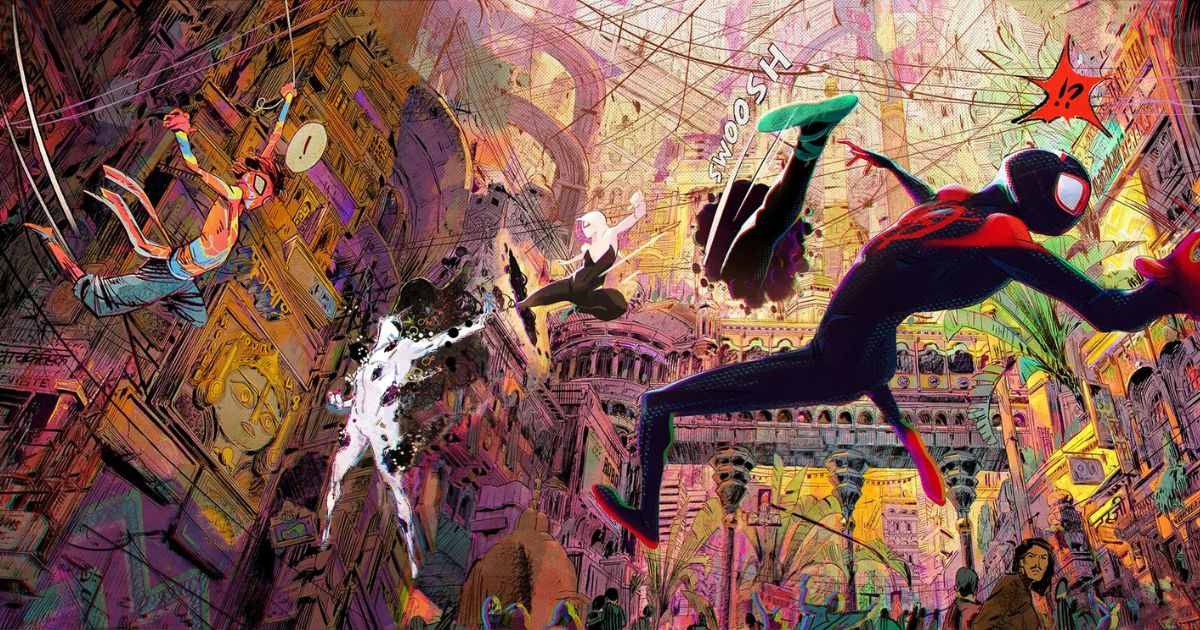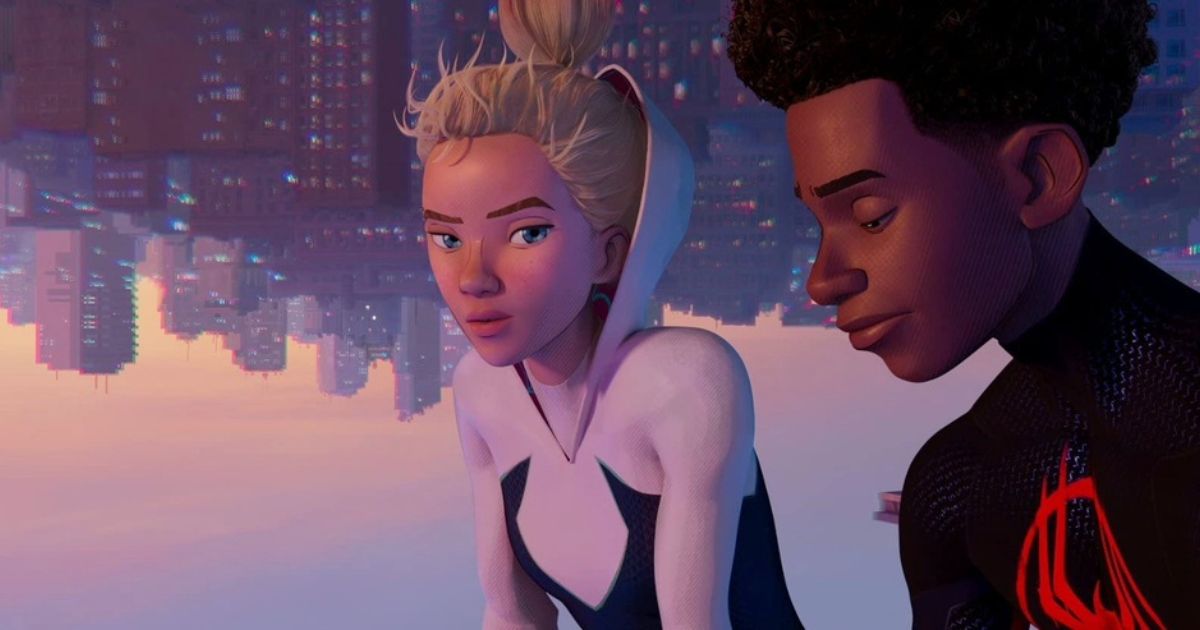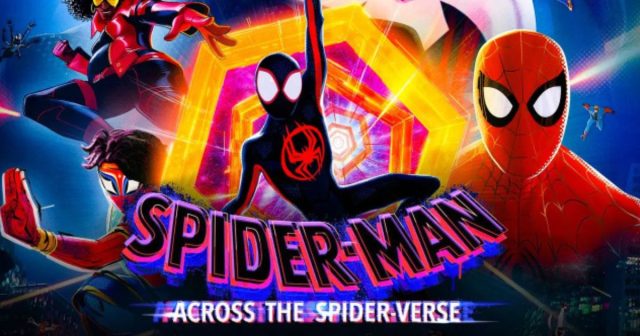The sequel to the groundbreaking animated hit, Spider-Man: Into the Spider-Verse, Across the Spider-Verse swings into theaters with even grander scope, richer visuals, and a deeper emotional core. Directed by Joaquim Dos Santos, Kemp Powers, and Justin K. Thompson, and produced by Phil Lord and Christopher Miller, this follow-up explores the infinite possibilities of the Spider-Verse while staying true to the heart of its lead, Miles Morales.
In this review, we unpack everything from the dazzling animation to the narrative risks that pay off in a spectacular fashion.
Plot Summary
Picking up not long after the events of the first film, Miles Morales (Shameik Moore) is struggling to balance life as a high schooler in Brooklyn with his newfound responsibilities as Spider-Man. When a mysterious new threat emerges—known as The Spot (voiced by Jason Schwartzman)—Miles must team up with Gwen Stacy (Hailee Steinfeld) and an ensemble of Spider-heroes from alternate dimensions. The multiverse concept expands dramatically as we visit diverse worlds: from a noir 1930s aesthetic to a futuristic techno-city. The stakes escalate when the enigmatic Miguel O’Hara (Oscar Isaac), aka Spider-Man 2099, reveals that a collision of universes could tear them all apart. Against this backdrop, Miles must confront his self-doubts, trust his instincts, and learn what it truly means to be Spider-Man.
Animation and Visual Style

If there’s one aspect that defines the Spider-Verse franchise, it’s the revolutionary animation. Across the Spider-Verse elevates the style to new heights, blending hand-drawn techniques with 3D modeling. The film operates at a variable frame rate—slowing down to 12 FPS during key action beats—giving fights an almost tangible punch. Each universe boasts its own palette: the neon pop of Brooklyn, the inky shadows of Spider-Noir, the pastel dreamscape of Pavitr Prabhakar’s India. These worlds flow seamlessly, yet maintain distinct textures, almost like comic book panels brought to life. The layering of on-screen text, motion lines, and halftone dot shading creates a sensory feast that demands to be seen on the biggest screen possible.
Characters and Performances
At the core of the film is Miles Morales, and Shameik Moore delivers a deeply relatable performance, capturing Miles’ humor, vulnerability, and growing heroism. Hailee Steinfeld returns as Gwen Stacy, whose chemistry with Moore adds emotional weight to their partnership. Oscar Isaac shines as the brooding Miguel O’Hara, whose futuristic perspective and moral complexity introduce fresh conflict. Supporting voices, like Issa Rae as Jessica Drew and Daniel Kaluuya as Hobie Brown, add humor and heart, even in brief cameo appearances. Jason Schwartzman’s The Spot is a scene-stealer, his elastic powers matched by his tongue-in-cheek delivery. The ensemble cast strikes a perfect balance between familiarity and novelty, giving each Spider-hero a moment to shine without overcrowding the narrative.
Themes and Emotional Depth

Beneath the kaleidoscopic visuals lies an emotional core centered on identity, family, and responsibility. Miles grapples with the weight of legacy—both his father’s police background and his mentor Peter Parker’s influence from another dimension. The film explores intergenerational conflict, as Miles’ parents (voiced by Brian Tyree Henry and Luna Lauren Velez) struggle to protect him while respecting his choices. Gwen’s storyline delves into loss and the sacrifices heroes make. Miguel O’Hara’s arc raises ethical questions about free will versus destiny. These thematic layers add resonance, making the high-octane action all the more meaningful when the characters face personal truths.
Direction, Soundtrack, and Pacing
Joaquim Dos Santos, Kemp Powers, and Justin K. Thompson helm a film that never loses momentum. Action sequences are choreographed with clarity and flair, each shot maximizing the frame’s energy. Yet the directors also allow quieter moments—Miles sketching in his notebook, Gwen’s piano melody—to breathe. The soundtrack, featuring tracks by Metro Boomin, Swae Lee, and emerging artists, pulses with youthful energy and complements the diverse visual landscapes. Ludwig Göransson’s score weaves through emotional beats, adding gravitas to poignant scenes. The film’s three acts flow organically, with rising tension that culminates in a finale both exhilarating and heartfelt.
Easter Eggs and References
Fans will delight in the plethora of nods to comics and pop culture. From hidden cameos of Spider-Totems to visual homages referencing classic runs by Brian Michael Bendis, each detail enriches rewatch value. Look closely for graffiti tags referencing The Prowler and a blink-and-you-miss-it shot of the green Goblin’s pumpkin bomb. Even the closing credits sequence, rendered in hand-drawn cell animation, offers surprises that set up potential future installments.
Final Verdict
Spider-Man: Across the Spider-Verse is a rare sequel that surpasses expectations on every front. Its boundary-pushing animation, well-crafted characters, and emotionally resonant story make it a standout not only in superhero cinema but in animated filmmaking as a whole. Whether you’re a lifelong Spider-fan or new to the web-slinger, this vibrant multiverse adventure delivers thrills, laughs, and heartfelt moments. It reaffirms that with great power comes great possibility—on screen and beyond.
Rating: 9.5/10
For Further Reading, explore Killers of the Flower Moon Movie Review: Scorsese’s Epic Crime Drama Explored









